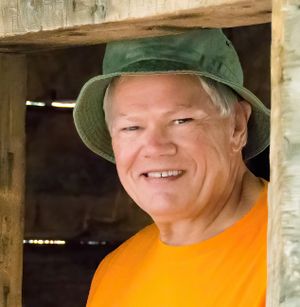Someone asked how often I get out to go birding and take photos. I think the question was concerning the variety of birds I post on Twitter. The quick answer was often, but it varies based on season, weather, and "real life." Afterward, I realized there was more I could share about my birding habits.
Before I retired, I was out in nature almost every weekend and holiday, often all day long. I now get out for at least a few hours a day on more than 150 days a year. Do you think spending some portion of 150 plus days a year in the field is a lot, typical, or just right? I would venture to say that when asked how much time they spend birding, serious birders and nature photographers would answer, "Not enough." There is no substitute for time in the field.
The following descriptions of my birding by season are for Tennessee and the surrounding area. I know it is different for other parts of the country.
Spring is an intense birding season for me. That's when I'm generally out twenty-plus days a month. Spring migration brings a bounty of seasonal birds. All birds are bulking up on their favorite food. Mature birds are looking for mates and going through courting rituals. In addition to all that excitement, birds are often less skittish during this time. Nest building quickly follows, and there are often opportunities to watch birds gathering materials. If you have to limit your birding time, consider prioritizing the spring season. There is lots of activity, and most birds are mature, making identification easier.
It's about the same for the first half of summer, but I get out less during the later summer days. During the first half of summer, proud parents are busy protecting and feeding their young. They are often active all day. The birds are still active in the late summer as fledglings learn to feed themselves, but I tend to slow down. Many birds molt after nesting. They are often less photogenic during this time. I might get good shots of a male Northern Cardinal, but they can look sickly and not very attractive during molting. Scorching hot and humid days in the south also slow me down. It also seems to slow down some birds, but all birds tend to bulk up for the next season or migration towards the end of summer.
In the fall, my days in the field go back up. Sometimes I see new birds as they migrate to their winter homes. Fledglings are also fun to watch, but immature birds are often difficult to identify. I get the most requests to identify a bird during the fall.
Winters in Tennessee are mild, but it is still my least busy time. My birding still varies with the weather. We get lots of rain and many overcast days when the light is not good enough for my camera and lens to get good shots. However, it's a great time to photograph perching birds as deciduous trees are bare. It's an excellent time to learn more about our year-round birds. Hawks and owls are usually easier to find in bare trees or gliding over fields of tall grass. Grassy areas often have some of the sparrows I love.
Travel is another factor that can undo these norms, but that's a topic for another post. I also know that not everyone can get out, and it's another topic I would like to touch on in another post. It's also one of the reasons I post photos. My heart is with those folks, and I know they appreciate an opportunity to see birds through my work and the work of other photographers. And even if we can get out, those pesky "real-life" issues can keep anyone out of the field in any season.
Birding norms can vary by where you live. I'm curious how they are different for you if you care to share.
